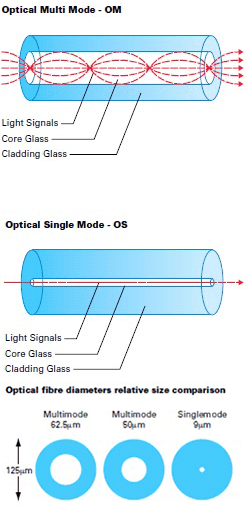This means that the core to cladding diameter ratio is 50 microns to 125 microns and 62 5 microns to 125 microns.
Multimode fiber sizes.
Multimode fiber is usually 50 125 and 62 5 125 in construction.
Multimode fibers originally came in several sizes optimized for various networks and sources but the data industry standardized on 62 5 core fiber in the mid 80s 62 5 125 fiber has a 62 5 micron core and a 125 micron cladding.
What s happening inside the multimode fiber.
Single mode fiber and multimode fiber are not compatible.
Usually the diameter of the multimode fiber is either 50 125 µm or 62 5 125 µm.
There are different types of fiber optic cable.
At present there are four kinds of multi mode fibers.
It is estimated that the transmission costs of multimode fiber including both transmitter and receiver sides will be in the range of 500 to 800.
And multimode fiber core diameter is 50 µm and 62 5 µm typically which enables it to have higher light gathering ability and simplify connections.
Om1 om2 om3 and om4.
The cladding diameter of single mode and multimode fiber is 125 µm.
Multi mode optical fiber is a type of optical fiber mostly used for communication over short distances such as within a building or on a campus.
Multimode fibers are described by their core and cladding diameters.
Rf broadband signals such as what cable companies commonly use cannot be transmitted over multimode fiber.
Multi mode fiber has a fairly large core diameter that enables multiple light modes to be propagated and limits the maximum length of a transmission link because of modal dispersion.
The attenuation of multimode fiber is higher than sm fiber because of its larger core diameter.

